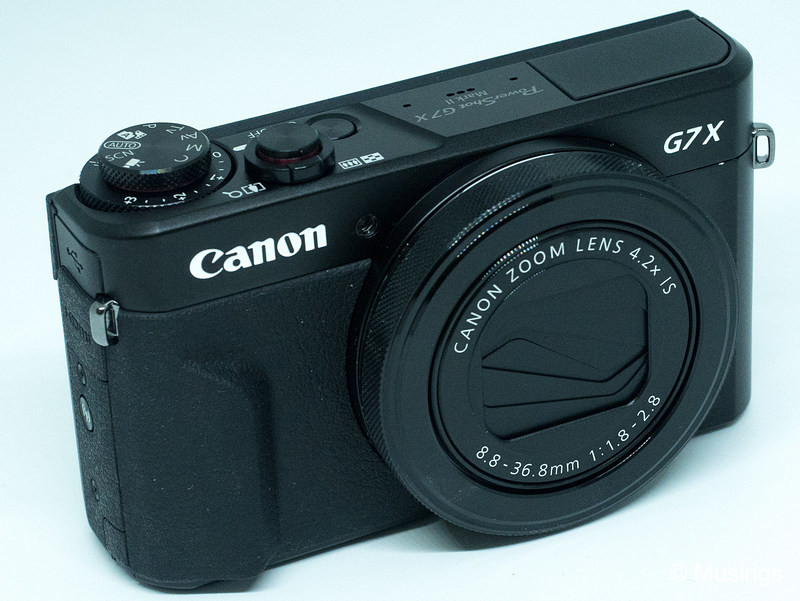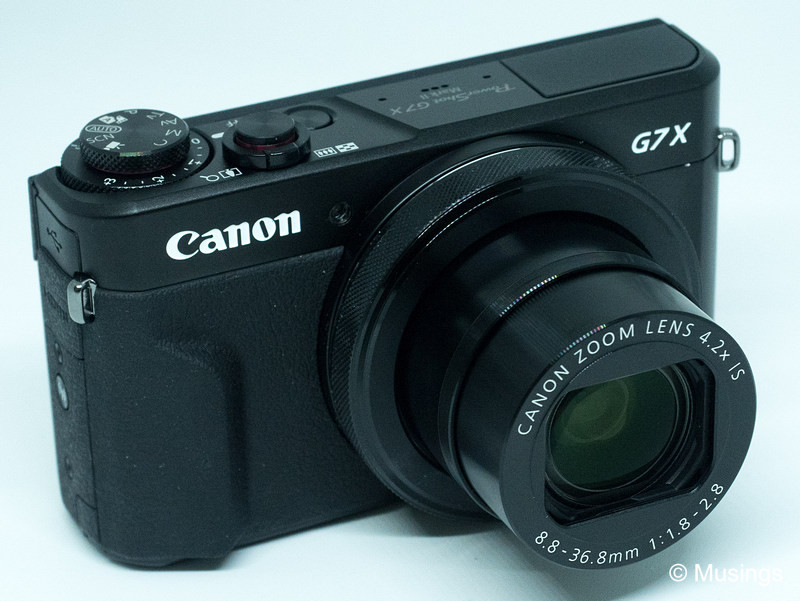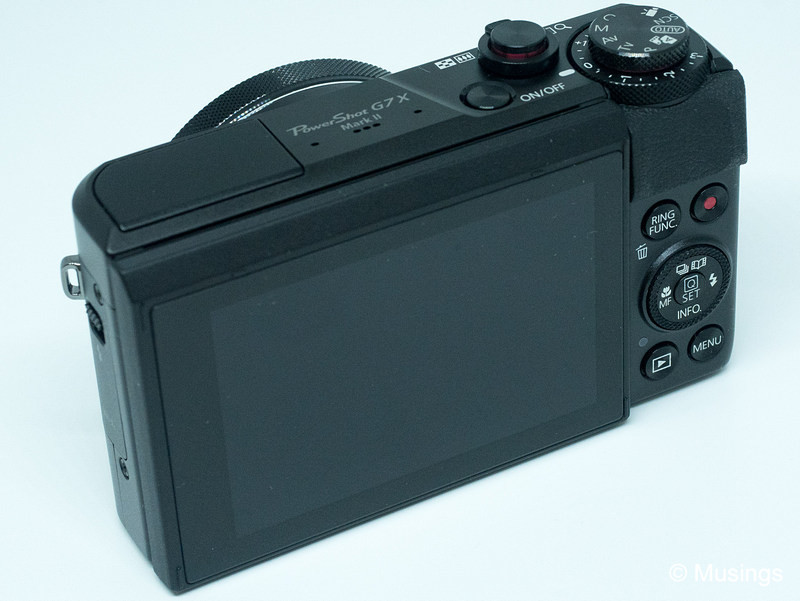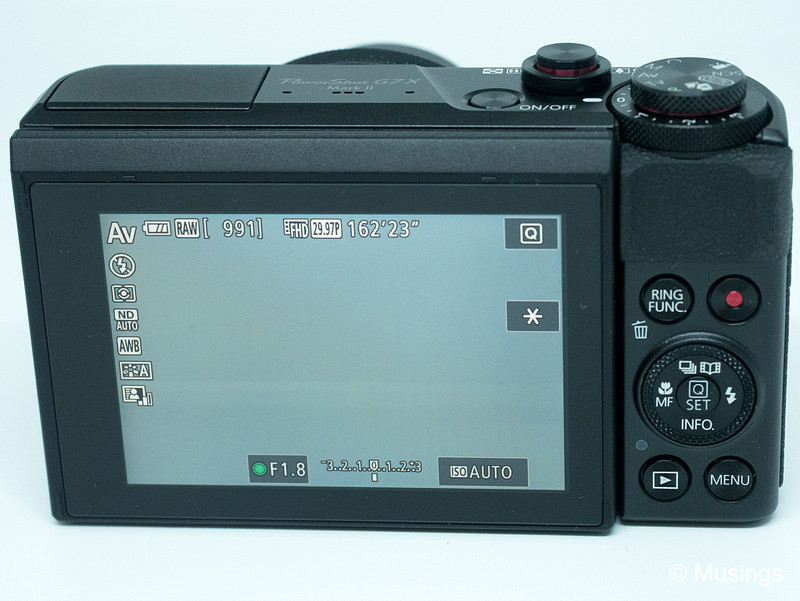I’ve always found taking pictures with the smartphone fiddly. They’re pocketable yes – but the lack of a handholding grip makes holding the phone to take any sort of a picture a routinely nervous experience. So, over the last half-dozen years or so, I’ve had a few dalliances with small non-interchangeable lens compact cameras – including the Panasonics LX7 and LX100, and the Fujifilm X70. The use cases for these acquisitions were quite specific: a berms-pocket-friendly camera when my messenger bag isn’t with me, and for family wefies. Of the three, two have been sold away: the LX100 had great specs and handled well – but wasn’t particularly compact, and there was an obvious image softness and also color rendering that I couldn’t get past. And the LX100 couldn’t be used for wefies for its lack of a flip-up or articulating screen. The X70 was compact, but perhaps because of the larger APS-C sensor and the shallow depth of field, it was routinely hard to get all four of us in sharp focus, unless the lens was stopped down significantly.
Many industry observers have reported on the gradual demise of the small sensor compact camera segment, in large part because the imaging you get from it is now matched – and in specific aspects even surpassed – by the current generation smartphones.
There is one holdout segment though: and it’s the one inch sensor compacts. I’ve long kept a close eye on developments and models here, and been tempted to get one for years now. Sony especially has been particularly aggressive with its RX cameras, with the almost yearly iteration of its very popular RX100 series of 1″ compacts. And Panasonic has also just got onto the bandwagon too last year with its aggressively priced LX10. In the last several years though, there was always one issue or another about these models that made me hesitant about picking one up. Whether it’s the asking price – the relatively new Sony RX100 Mark V comes with an eye-watering SGD1399 RRP price tag – or a specification that disappoints, e.g. battery life, AF or optics.
Our upcoming Phuket trip though made me quicken any purchase decision I might be making: on account that unlike our Western Australia trip in June this year, I didn’t think I’d want to prop my E-M1 on a tripod in a busy street just for a picture of the four of us. Moreover, it’d be icing on the cake if I could find something which had an equivalent underwater casing that won’t cost a bomb. Y’know, if we’re kayaking in Phang Nga bay and a rogue wave hits us haha.
As it is now, the leading 1″ sensor compact models are the Sony RX100 Marks III to V – which other manufacturer still puts on shelves three iterations of their current line LOL – the Canon G9X and G7X Marks II, and the Panasonic LX10. Of these six models, the G9X is the smallest sized and very attractively priced at about SGD600. But the lack of a flip-up screen meant it was knocked right out of consideration. The RX100s also have a small electronic viewfinder, but do not support touchscreen AF. So, after a lot of price comparisons and hunting around – including from pre-loved resales – the summary of it was:
The almost 3.5 year old RX100 Mark III model is the equivalent of the G7X Mark II and LX10, price-wise.
I found a camera store that was selling the RX100 Mark V with significant discounts: at just SGD1,145. This model is top of the line in almost every single regard – imaging, AF, burst mode, 4K stabilization etc. – but the electronic wizardry takes its toll on its already small battery. This RX100 will run out of juice faster than all its predecessors.
The LX10 is about SGD820 and almost the equivalent of the Mark V. But there were a few odd videos I saw on YouTube that showed the camera having issues video focusing. Also, there were no affordable underwater casings for it.
The G7X Mark II was released about 1.5 years ago and Canon is expected to issue an update to it sometime early next year – maybe. The camera is very slightly larger than the diminutive RX100s, and has a cheap third party underwater casing for it. Its’ AF, imaging and optics are pretty good – if not quite where the RX100 is.
And when it finally came down to it, I went for the G7X Mark II over the weekend – largely on account of the price I got it for: SGD699 or USD513 – significantly lower than Singapore’s recommended retail price of SGD799 and even Amazon’s listed price of USD679. Of the three contending models, the G7X was the cheapest. And to think of it: a year and a half ago I was about to buy the G7X Mark I already – but changed my mind to X70 at the last minute. So, this is like coming back full-circle.
First pictures!




More notes on the usability next!
Recent comments